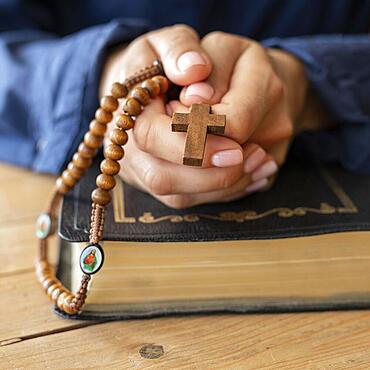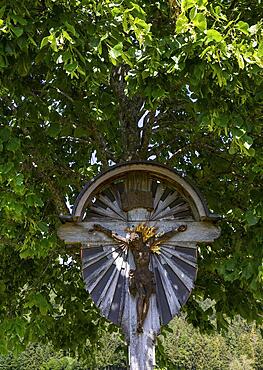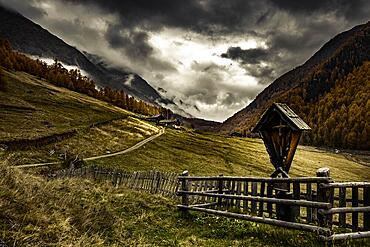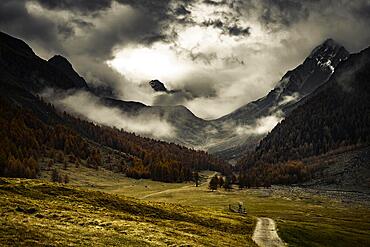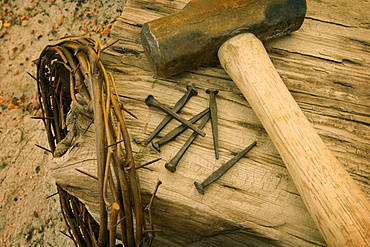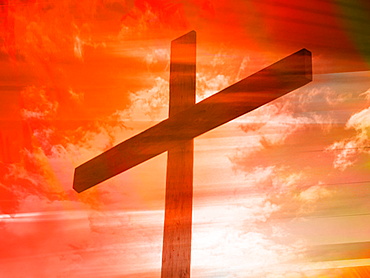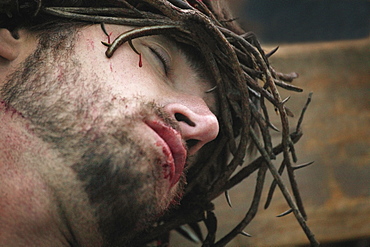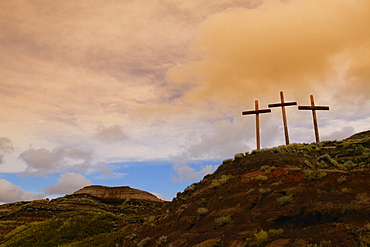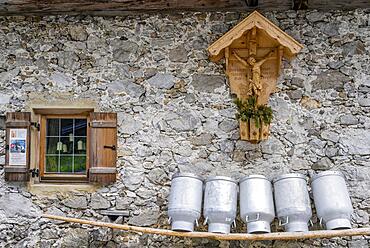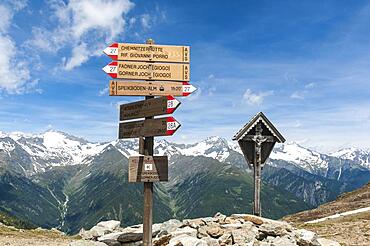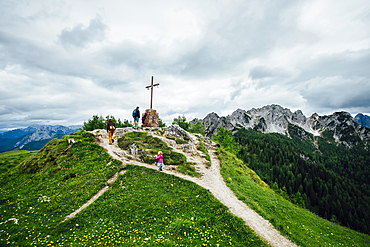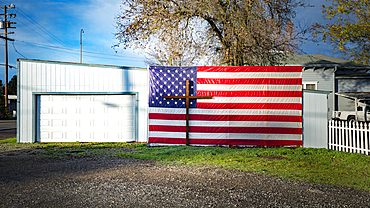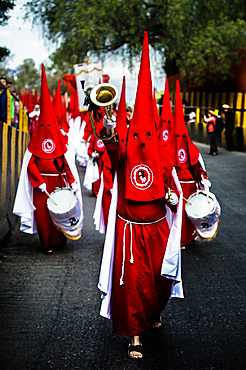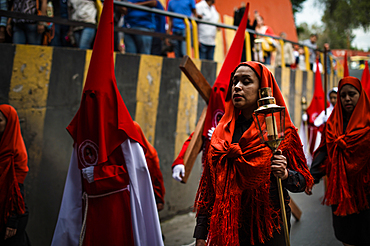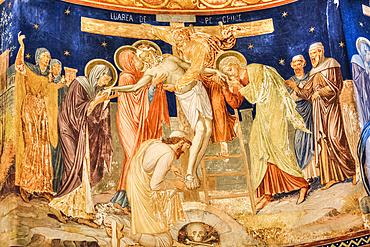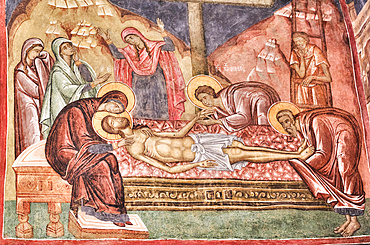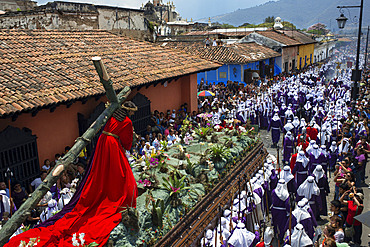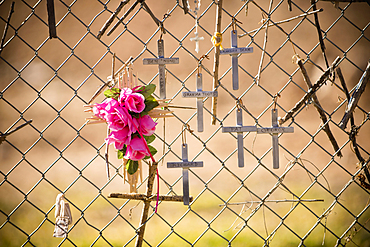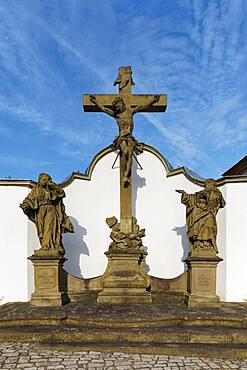Recent searches
Loading...
832-404169 - Field cross, Freudental, Allensbach am Bodensee, Baden-Wuerttemberg, Germany, Europe
832-403676 - Religious woman praying with rosary beads
832-403494 - Linden tree with wayside cross, Osterhorn group, Koppl, Flachgau, Land Salzburg, Austria, Europe
832-403465 - Wayside cross on the main road in front of the village of Pattigham, Innviertel, Upper Austria, Austria, Europe
832-401983 - Republic of Colombia, Landscape in the Department of Huila near the Tatacoa Desert, Desierto de la Tatacoa, Mule and wayside shrine, Colombia, South America
832-401959 - Wayside cross, wooden cross with Jesus figure near Pfaffenhofen, Ilmtal, Pfaffenhofen an der Ilm, Bavaria, Germany, Europe
832-400676 - Crucifix in a church, Bavaria, Germany, Europe
832-399430 - Way cross with alpine hut in autumnal mountain landscape with threatening cloudy sky, Pfossental, Merano, Vinschgau, South Tyrol, Italy, Europe
832-399427 - Way cross with path in autumnal mountain landscape with threatening cloudy sky, Pfossental, Merano, Vinschgau, South Tyrol, Italy, Europe
832-398496 - front view person with holy book rosary
832-398058 - Swedish cross, crucifixion group at the entrance to Mainau Island, Lake Constance, Baden-Wuerttemberg, Germany, Europe
832-397395 - Wayside shrine, wayside shrine near Bad Leonfelden, Muehlviertel region, Upper Austria, Austria, Europe
832-397344 - Crucifix in the cemetery of the Catholic parish church of St. George, Reichenau Island, Lake Constance, Constance County, Baden-Wuerttemberg, Germany, Europe
832-397026 - Cross stone, boulder, limestone, Stankt Gilgen, Mondsee, Upper Austria
832-397025 - Cross stone, boulder, limestone, Stankt Gilgen, Mondsee, Upper Austria
1113-107702 - Detwang, Church of St, Peter and Paul, crucifixion altarpiece
1113-107680 - Wayside shrine with crucifixion scene in Findlos, view of the Rhön landscape
746-92186 - Historical reenactment of the Passion of Christ of Mogliano, Crucifixion, Marche, Italy, Europe
746-92459 - Ducal Palace, Crucifixion by Giovanni Antonio from Pesaro, UNESCO World Heritage Site, Urbino, Marche, Italy, Europe
832-395973 - Wayside cross, field cross, Materl, wooden carved Jesus on the cross, Prettau, Predoi, Ahrntal, Valle Aurina, Pustertal, Valle Pusteria, Central Alps, Main Alpine Ridge, South Tyrol, Alto Adige, Italy, Europe
832-396308 - Crucified Christ with ferns and palm catkins, Church of St. Ulrich, Rechtis, Allgaeu, Bavaria, Germany, Europe
832-396081 - Milk cans lined up on a wooden bench, window and shrine with Jesus on the cross, facade made of rough stones from an alpine pasture, Gramaialm, Alpenpark Karwendel, Tyrol, Austria, Europe
832-395974 - Medieval frescoes from the school of Friedrich Pacher, replica of a Romanesque crucifix, castle chapel, Taufers Castle, Sand in Taufers (Campo Tures), Ahrntal, Valle Aurina, Pustertal, Valle Pusteria, Central Alps, Zillertal Alps, Main Alpine Ridge, South Tyrol, Alto Adige, Italy, Europe
832-395975 - Hiking sign, signpost at Seewassernock (2433 m), wayside cross, field cross, Materl, crucifix, Speikboden, Ahrntal, Valle Aurina, Pustertal, Valle Pusteria, Central Alps, Zillertal Alps, Main Alpine Ridge, South Tyrol, Alto Adige, Italy, Europe
1350-6046 - Bishop blessing the palms,mass,Palm Sunday.Interior of Basilica Sagrada Familia, Barcelona, Catalonia, Spain
1178-41522 - Caucasian father helping daughter on rock at crucifix
1178-41521 - Caucasian girl posing on rock at crucifix
1178-41520 - People climbing hill to crucifix, Tarvisio, Vienna, Austria
1178-40256 - Ladder leaning on stone wall near crucifix
1350-5075 - Other participants include adults and children in various dress which include altar boys, Nazarenes,
1350-5170 - For almost 60 years, about two thousand people from 28 different guilds (associations of faithful Catholics) come together on Good Friday to participate in this procession, carrying emblems, religious images concerning the Stations of the Cross, and dressed in the distinctive colors of their guilds, Each one of the ,??Guilds,?? carries an image with a picture of Jesus Christ,??s Stations of the Cross and of the mysteries of the Holy Rosary,
1350-5273 - Among them there are also differences Nazarenes, some are barefoot and harder doing his penance, others bearing crosses, there are those who carry various representative elements of the brotherhood, musical objects, candles, etc,
1350-5256 - For almost 60 years, about two thousand people from 28 different guilds (associations of faithful Catholics) come together on Good Friday to participate in this procession, carrying emblems, religious images concerning the Stations of the Cross, and dressed in the distinctive colors of their guilds, Each one of the ,??Guilds,?? carries an image with a picture of Jesus Christ,??s Stations of the Cross and of the mysteries of the Holy Rosary,
1350-5124 - Women wearing traditional Potosi rebozos and carrying candles,
1350-5140 - Among them there are also differences Nazarenes, some are barefoot and harder doing his penance, others bearing crosses, there are those who carry various representative elements of the brotherhood, musical objects, candles, etc,
1350-5118 - Women wearing traditional Potosi rebozos and carrying candles,
1350-5134 - For almost 60 years, about two thousand people from 28 different guilds (associations of faithful Catholics) come together on Good Friday to participate in this procession, carrying emblems, religious images concerning the Stations of the Cross, and dressed in the distinctive colors of their guilds, Each one of the ,??Guilds,?? carries an image with a picture of Jesus Christ,??s Stations of the Cross and of the mysteries of the Holy Rosary,
1350-5275 - Women wearing traditional Potosi rebozos and carrying candles,
1350-5073 - Women wearing traditional Potosi rebozos and carrying candles,
1350-5074 - Women wearing traditional Potosi rebozos and carrying candles,
1350-5271 - Women wearing traditional Potosi rebozos and carrying candles,
1350-5144 - There are twenty three main platform, with the end of the procession marked by that dedicated to Our Lady of Solitude also called ,??La Dolorosa,?? because of the expression her face takes on upon seeing her dead Son, The statue is carried by around 40 men, carrying upon their shoulders a weight of over a ton,
1350-5146 - For almost 60 years, about two thousand people from 28 different guilds (associations of faithful Catholics) come together on Good Friday to participate in this procession, carrying emblems, religious images concerning the Stations of the Cross, and dressed in the distinctive colors of their guilds, Each one of the ,??Guilds,?? carries an image with a picture of Jesus Christ,??s Stations of the Cross and of the mysteries of the Holy Rosary,
1350-5072 - Among them there are also differences Nazarenes, some are barefoot and harder doing his penance, others bearing crosses, there are those who carry various representative elements of the brotherhood, musical objects, candles, etc,
1350-5257 - Among them there are also differences Nazarenes, some are barefoot and harder doing his penance, others bearing crosses, there are those who carry various representative elements of the brotherhood, musical objects, candles, etc,
1350-5099 - The participants, called ,??costaleros,??, have their head covered by a long, pointed hood adding drama to the action,
1350-5114 - Women wearing traditional Potosi rebozos and carrying candles,
1350-5264 - There are twenty three main platform, with the end of the procession marked by that dedicated to Our Lady of Solitude also called ,??La Dolorosa,?? because of the expression her face takes on upon seeing her dead Son, The statue is carried by around 40 men, carrying upon their shoulders a weight of over a ton,
1350-5188 - Women wearing traditional Potosi rebozos and carrying candles,
1350-5088 - Among them there are also differences Nazarenes, some are barefoot and harder doing his penance, others bearing crosses, there are those who carry various representative elements of the brotherhood, musical objects, candles, etc,
1350-5254 - Among them there are also differences Nazarenes, some are barefoot and harder doing his penance, others bearing crosses, there are those who carry various representative elements of the brotherhood, musical objects, candles, etc,
1116-51842 - Interior Fresco, St George Church Mirauti, 1375; Suceava, Suceava County, Romania
1116-51845 - Interior Fresco, St George Church Mirauti, 1375; Suceava, Suceava County, Romania
1116-51849 - Interior fresco, Church of the Holy Cross, 1487; Patrauti, Suceava County, Romania
1116-51843 - Interior Fresco, St George Church Mirauti, 1375; Suceava, Suceava County, Romania
1116-51848 - Interior fresco, Church of the Holy Cross, 1487; Patrauti, Suceava County, Romania
1350-2688 - Verges, a small town in the Northeast of Catalonia (Spain), during Easter celebrates the Procession of Verges with skeletons dancing on the sound of a drum, Roman soldiers, known as the 'Manages', and a representation of the life and crucifixion of Jesus Christ. The Procession features the Dance of Death, a tradition from the Middle Age associated with epidemics and plagues and the only one remaining in Spain Ten skeletons dance to the beat of a drum to remember that no one is exempt of death. The backdrop of the medieval walls and towers of Verges is key to this macabre staging.
1350-2693 - Verges, a small town in the Northeast of Catalonia (Spain), during Easter celebrates the Procession of Verges with skeletons dancing on the sound of a drum, Roman soldiers, known as the 'Manages', and a representation of the life and crucifixion of Jesus Christ. The Procession features the Dance of Death, a tradition from the Middle Age associated with epidemics and plagues and the only one remaining in Spain Ten skeletons dance to the beat of a drum to remember that no one is exempt of death. The backdrop of the medieval walls and towers of Verges is key to this macabre staging.
1350-2692 - Verges, a small town in the Northeast of Catalonia (Spain), during Easter celebrates the Procession of Verges with skeletons dancing on the sound of a drum, Roman soldiers, known as the 'Manages', and a representation of the life and crucifixion of Jesus Christ. The Procession features the Dance of Death, a tradition from the Middle Age associated with epidemics and plagues and the only one remaining in Spain Ten skeletons dance to the beat of a drum to remember that no one is exempt of death. The backdrop of the medieval walls and towers of Verges is key to this macabre staging.
1350-2695 - Verges, a small town in the Northeast of Catalonia (Spain), during Easter celebrates the Procession of Verges with skeletons dancing on the sound of a drum, Roman soldiers, known as the 'Manages', and a representation of the life and crucifixion of Jesus Christ. The Procession features the Dance of Death, a tradition from the Middle Age associated with epidemics and plagues and the only one remaining in Spain Ten skeletons dance to the beat of a drum to remember that no one is exempt of death. The backdrop of the medieval walls and towers of Verges is key to this macabre staging.
1350-2690 - Verges, a small town in the Northeast of Catalonia (Spain), during Easter celebrates the Procession of Verges with skeletons dancing on the sound of a drum, Roman soldiers, known as the 'Manages', and a representation of the life and crucifixion of Jesus Christ. The Procession features the Dance of Death, a tradition from the Middle Age associated with epidemics and plagues and the only one remaining in Spain Ten skeletons dance to the beat of a drum to remember that no one is exempt of death. The backdrop of the medieval walls and towers of Verges is key to this macabre staging.
1350-2691 - Verges, a small town in the Northeast of Catalonia (Spain), during Easter celebrates the Procession of Verges with skeletons dancing on the sound of a drum, Roman soldiers, known as the 'Manages', and a representation of the life and crucifixion of Jesus Christ. The Procession features the Dance of Death, a tradition from the Middle Age associated with epidemics and plagues and the only one remaining in Spain Ten skeletons dance to the beat of a drum to remember that no one is exempt of death. The backdrop of the medieval walls and towers of Verges is key to this macabre staging.
1350-2687 - Verges, a small town in the Northeast of Catalonia (Spain), during Easter celebrates the Procession of Verges with skeletons dancing on the sound of a drum, Roman soldiers, known as the 'Manages', and a representation of the life and crucifixion of Jesus Christ. The Procession features the Dance of Death, a tradition from the Middle Age associated with epidemics and plagues and the only one remaining in Spain Ten skeletons dance to the beat of a drum to remember that no one is exempt of death. The backdrop of the medieval walls and towers of Verges is key to this macabre staging.
1350-3763 - Easter Holy Week procession in Antigua, Guatemala. Jesus Nazareno de la Penitencia Procession in Antigua, Guatemala. Holy Week, friday.
1350-2689 - Verges, a small town in the Northeast of Catalonia (Spain), during Easter celebrates the Procession of Verges with skeletons dancing on the sound of a drum, Roman soldiers, known as the 'Manages', and a representation of the life and crucifixion of Jesus Christ. The Procession features the Dance of Death, a tradition from the Middle Age associated with epidemics and plagues and the only one remaining in Spain Ten skeletons dance to the beat of a drum to remember that no one is exempt of death. The backdrop of the medieval walls and towers of Verges is key to this macabre staging.
1350-2696 - Verges, a small town in the Northeast of Catalonia (Spain), during Easter celebrates the Procession of Verges with skeletons dancing on the sound of a drum, Roman soldiers, known as the 'Manages', and a representation of the life and crucifixion of Jesus Christ. The Procession features the Dance of Death, a tradition from the Middle Age associated with epidemics and plagues and the only one remaining in Spain Ten skeletons dance to the beat of a drum to remember that no one is exempt of death. The backdrop of the medieval walls and towers of Verges is key to this macabre staging.
1350-2697 - Verges, a small town in the Northeast of Catalonia (Spain), during Easter celebrates the Procession of Verges with skeletons dancing on the sound of a drum, Roman soldiers, known as the 'Manages', and a representation of the life and crucifixion of Jesus Christ. The Procession features the Dance of Death, a tradition from the Middle Age associated with epidemics and plagues and the only one remaining in Spain Ten skeletons dance to the beat of a drum to remember that no one is exempt of death. The backdrop of the medieval walls and towers of Verges is key to this macabre staging.
1350-2694 - Verges, a small town in the Northeast of Catalonia (Spain), during Easter celebrates the Procession of Verges with skeletons dancing on the sound of a drum, Roman soldiers, known as the 'Manages', and a representation of the life and crucifixion of Jesus Christ. The Procession features the Dance of Death, a tradition from the Middle Age associated with epidemics and plagues and the only one remaining in Spain Ten skeletons dance to the beat of a drum to remember that no one is exempt of death. The backdrop of the medieval walls and towers of Verges is key to this macabre staging.
1178-35733 - Remote church, Hellissandur, Snaellsnes peninsula, Iceland
1178-36863 - Crucifixes and flowers hanging on memorial fence
1178-35732 - Remote church, Hellissandur, Snaellsnes peninsula, Iceland
1178-33468 - Hispanic woman with crucifix tattoo on neck
1178-33467 - Hispanic woman with crucifix tattoo on neck
832-393189 - Crucifixion group, depiction of Virgin Mary, Jesus and Johannes, Wiesentheid, Lower Franconia, Franconia, Bavaria, Germany, Europe
1116-50179 - Fresco, Holy Monastery of Varlaam, Meteora; Thessaly, Greece
1116-47838 - White statues representing Christ's crucifixion, Ballyferriter, County Kerry, Ireland
1116-47835 - Stone crucifix grave marker in a cemetery, Kiltimagh, County Mayo, Ireland
826-751 - Christian artwork on the Altar of the Crucifixion's vaulted ceiling in the Church of the Holy Sepulchre in Jerusalem, Israel, Middle East
1116-47125 - Sculpture Of Jesus Christ In The Cathedral Of Barcelona, Barcelona, Catalonia, Spain
1297-1119 - Interior of St. Mary Le Bow church in the City of London, London, England, United Kingdom, Europe
1116-46151 - Stone Cross And Gergeti Trinity Church With Mount Kazbek In The Background, Kazbegi, Mtskheta-Mtianeti, Georgia


